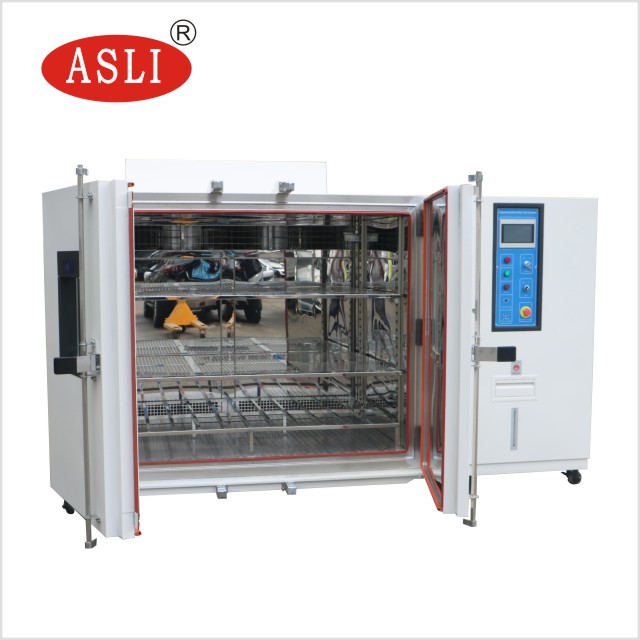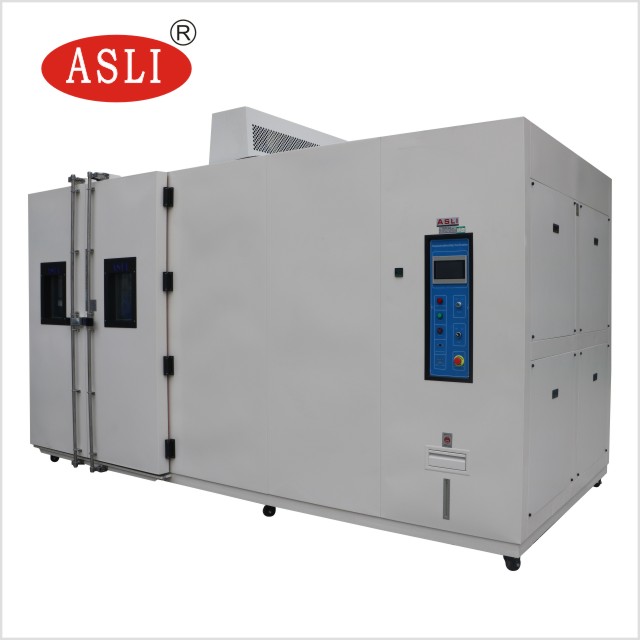In the aerospace industry, the integrity and performance of materials under extreme conditions are non-negotiable for safety and functionality. Walk-in test ovens are instrumental in this precise evaluation process, offering a controlled environment to subject aerospace materials to the severe fluctuations in temperature and humidity they will face in actual service conditions. As these ovens replicate the intense scenarios of both atmospheric flight and space re-entry, the data gathered is pivotal for advancing material technologies. Yet, one might ponder, how exactly do these sophisticated machines vary in their operational capacities, and what new innovations could further enhance their effectiveness in material testing?

In the aerospace industry, material testing stands as a pivotal process, ensuring that every component meets stringent safety and performance standards. This rigorous evaluation assesses material durability and environmental resistance, critical factors that define the reliability of aerospace components under extreme conditions.
Manufacturers prioritize these tests to maintain control over the quality and compliance of their products. By systematically exposing materials to simulated conditions that mimic those encountered in actual aerospace environments, companies can predict how well structures will withstand variables such as temperature fluctuations, pressure changes, and chemical exposures.
Ultimately, this level of meticulous verification empowers industry leaders to certify the integrity and safety of their aerospace components, fostering trust and dependability in their engineering outcomes.

Building on the foundation of rigorous material testing, walk-in test ovens play a significant role in the aerospace industry by replicating extreme environmental conditions. These ovens are crucial for evaluating how materials will perform under the stresses of actual aerospace environments.
The functions of walk-in test ovens include:
Control over these conditions ensures that aerospace materials meet the highest standards of safety and functionality.

Given the critical role of walk-in test ovens in the aerospace industry, standard testing protocols are meticulously designed to ensure consistency and reliability across all experiments.
These protocols include comprehensive guidelines that outline every step of the testing process, from temperature settings to duration and monitoring parameters. Adherence to these standard procedures not only upholds quality but also aligns with industry benchmarks, providing a reliable basis for comparing material performance under extreme conditions.
These protocols are rigorously updated to reflect technological advancements and emerging industry needs, ensuring that each test yields relevant and actionable data. This systematic approach facilitates precise control over experimental conditions, crucial for achieving the high standards demanded in aerospace material testing.
While exploring the efficacy of walk-in test ovens, several case studies highlight their pivotal role in advancing aerospace technologies.
These studies demonstrate how standardized testing methodologies contribute to the reliability and performance of aerospace materials under extreme conditions.
These applications underscore the necessity for precise control and reliable data, ensuring materials meet stringent aerospace standards before deployment.

Customizable Walk-In Temperature and Humidity Test Chamber | ASLI Environmental Testing Equipment
As the aerospace sector continues to demand higher standards for material testing, innovations in walk-in test oven technology have emerged as crucial enablers. These advancements primarily focus on enhancing oven efficiency and ensuring greater temperature accuracy. Modern ovens now integrate sophisticated algorithms that adjust temperatures dynamically, reducing energy consumption while maintaining precise control. This leap in technology not only supports rigorous aerospace testing protocols but also promotes sustainability.
| Feature | Benefit | Impact on Testing |
|---|---|---|
| Advanced Insulation | Reduces Heat Loss | Enhanced Efficiency |
| Precision Control | Maintains Consistent Temperature | Improved Accuracy |
| Automated Systems | Streamlines Operation | Increased Productivity |
These innovations collectively ensure that materials are tested under precisely controlled conditions, essential for aerospace applications.
Building on recent technological advancements in walk-in test ovens, the focus in aerospace material testing is shifting towards predictive analytics and artificial intelligence.
These tools enhance precision, enabling more controlled, efficient testing processes that predict material behavior under extreme conditions.
Here are key trends to watch:
These advances empower organizations to not only meet stringent aerospace standards but also drive innovation in material science, ensuring safety and efficiency in increasingly challenging operational environments.
The average cost of walk-in test ovens varies, influenced by cost factors such as size, customization, and technology. Current pricing trends suggest a range from $50,000 to over $200,000, depending on specifications and capabilities.
Time is money, and in testing, precision is key. The typical test duration for assessing material properties in an oven varies from hours to several days, depending on the specific requirements and test protocols.
Energy consumption rates of walk-in test ovens vary, primarily influenced by size, insulation quality, and operational frequency. Advancements in energy efficiency contribute significantly to operational sustainability, providing better control over long-term operational costs.
Walk-in test ovens typically require maintenance every 6 months, incorporating detailed performance checks. Adhering to these maintenance schedules is crucial to ensure the ovens function effectively, providing control over long-term operational stability and reliability.
Yes, walk-in test ovens can be custom-built to meet specific project requirements, adhering to rigorous aerospace standards. This custom design approach enables precise control over testing environments crucial for aerospace material performance.
In conclusion, the strategic application of walk-in test ovens in aerospace underscores a commitment to safety and innovation. By replicating the most severe conditions faced in outer space, these facilities ensure that every material employed can withstand extreme stresses, thereby safeguarding future missions. Coincidentally, just as astronauts explore new frontiers, these ovens propel material science into new realms of possibility, continuously enhancing the reliability and performance of aerospace technologies.
Founded in 1988, ASLI (China) Test Equipment Co., Ltd. produces high-quality inspection instruments and testing equipment, including temperature and humidity chambers, aging testers, and vibration testers. Certified to international standards, ASLI serves research, quality inspection, and educational sectors worldwide, renowned for precision, reliability, and exceptional customer service.
Contact us for a free quote of your ideal walk in temperature humidity test chamber!


[…] High-temperature testing methods. […]